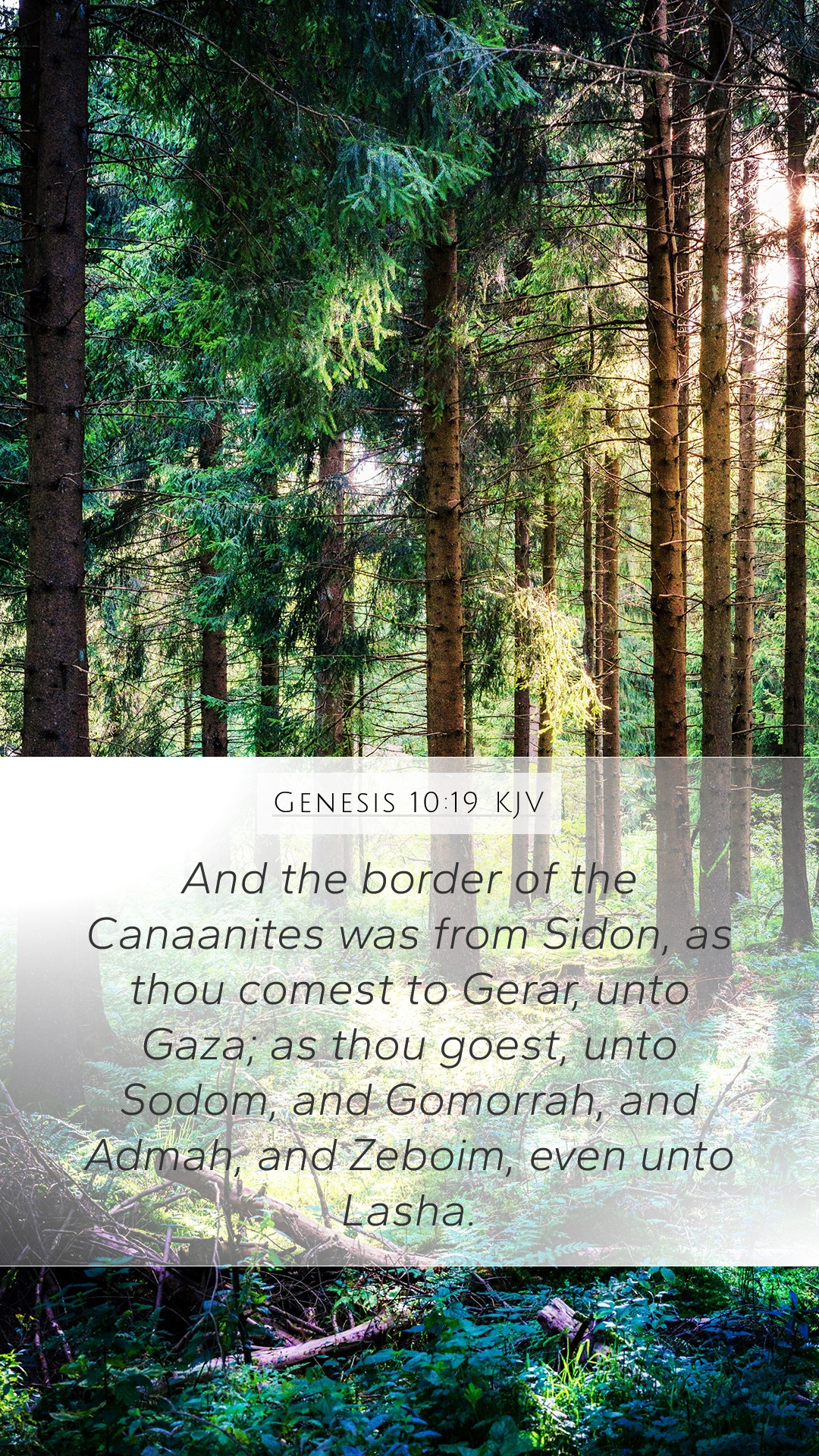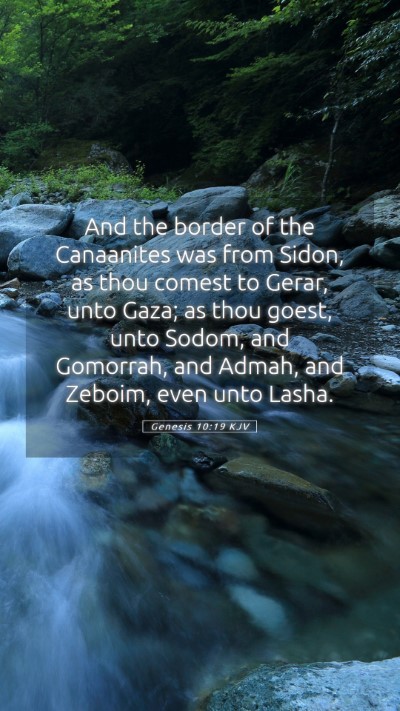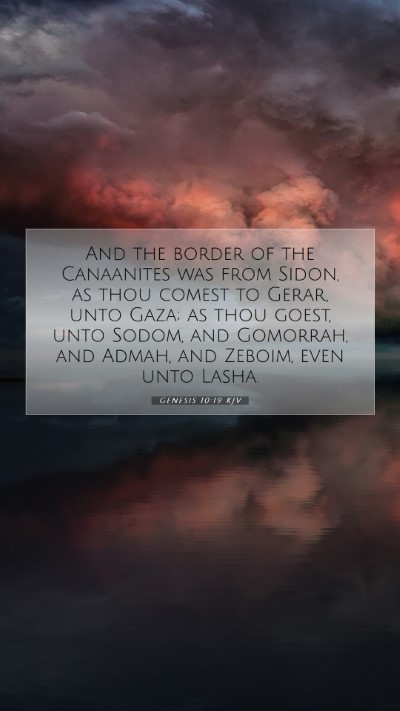Understanding Genesis 10:19
Genesis 10:19 reads: "And the border of the Canaanites was from Sidon, as thou comest to Gerar, unto Gaza; as thou goest, unto Sodom and Gomorrah, and Admah, and Zeboim, even unto Lasha." This verse describes the geographical boundaries of the land of Canaan, which is significant in the biblical narrative.
Bible Verse Meanings and Commentary
This passage is vital for understanding the historical and cultural context of the promise made by God to Abraham concerning the land of Canaan.
Historical Context
Matthew Henry's Commentary emphasizes that this chapter outlines the descendants of Noah and their geographical settlements post-Flood, indicating divine providence in the allocation of lands. It shows God’s plan unfolding through the nations that emerged from Noah’s lineage and highlights the significance of Canaan as a land promised to the Israelites.
Geographical Insight
- Sidon: An ancient Phoenician city that plays an important role in the trade and culture of the region.
- Gerar: A city mentioned throughout the Old Testament, representative of Philistine territory.
- Gaza: One of the five cities of the Philistines, known for its strategic location and conflict.
- Sodom and Gomorrah: Cities famously destroyed due to their wickedness, serving as a moral lesson in the narrative of Genesis.
- Admah and Zeboim: Lesser-known cities that also fell victim to divine judgment, illustrating the severity of sin.
- Lasha: Likely a location that marks the border of the Canaanite territory, demonstrating the extensive reach of their land.
Biblical Exegesis
Albert Barnes' Commentary adds depth by pointing out that understanding these borders is crucial for comprehending Israel's future. The reference to these cities not only marks the limits of Canaan but also sets the stage for the cultural and spiritual conflicts that would arise as the Israelites entered the Promised Land.
Theological Significance
Adam Clarke's Commentary delves into the theological implications of the Canaanite territories. He underscores that the delineation of these lands signifies God's sovereignty over nations and serves as a prelude to Israel's eventual conquest. The mention of Sodom and Gomorrah foreshadows the divine judgment that serves as a warning to later generations.
Application of Verses
Understanding Scripture like Genesis 10:19 helps us to grasp how history is interwoven with God's plan for humanity. This verse can be applied in Bible study groups and online Bible study sessions to explore themes of judgment, mercy, and promise, encouraging participants to reflect on the significance of boundaries—both physical and moral.
Conclusion
The insights from these commentaries enable readers to dive deeper into the meanings of Bible verses, leading to a richer understanding of Scripture. Genesis 10:19 provides a snapshot of God's larger narrative—the unfolding story of humanity through divine allocation of lands and the implications of obedience and disobedience.
Related Bible Cross References
- Genesis 12:6-7: The promise of land to Abraham.
- Genesis 19: The destruction of Sodom and Gomorrah.
- Numbers 34:1-12: Description of the borders of the Promised Land.


